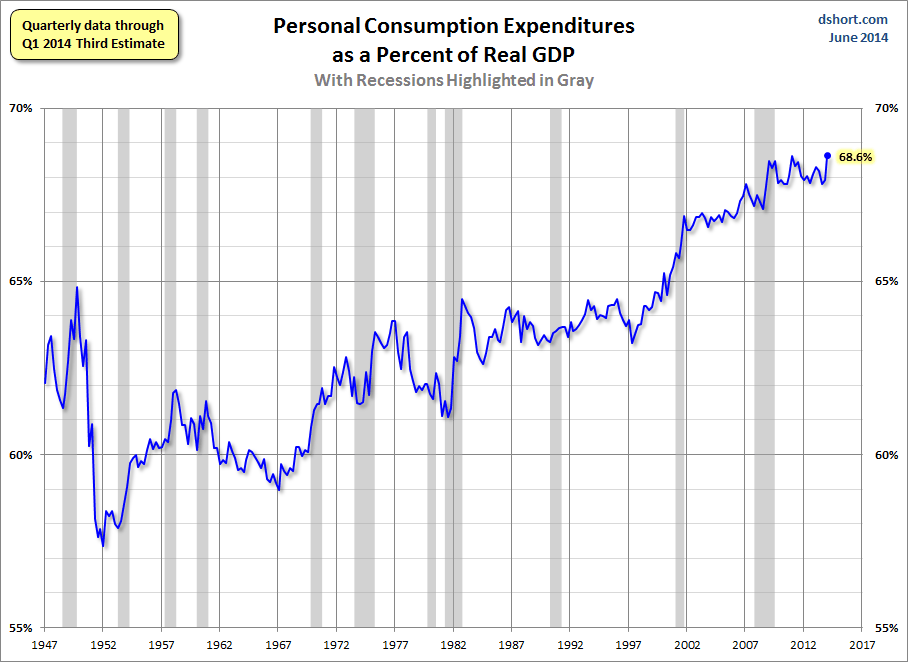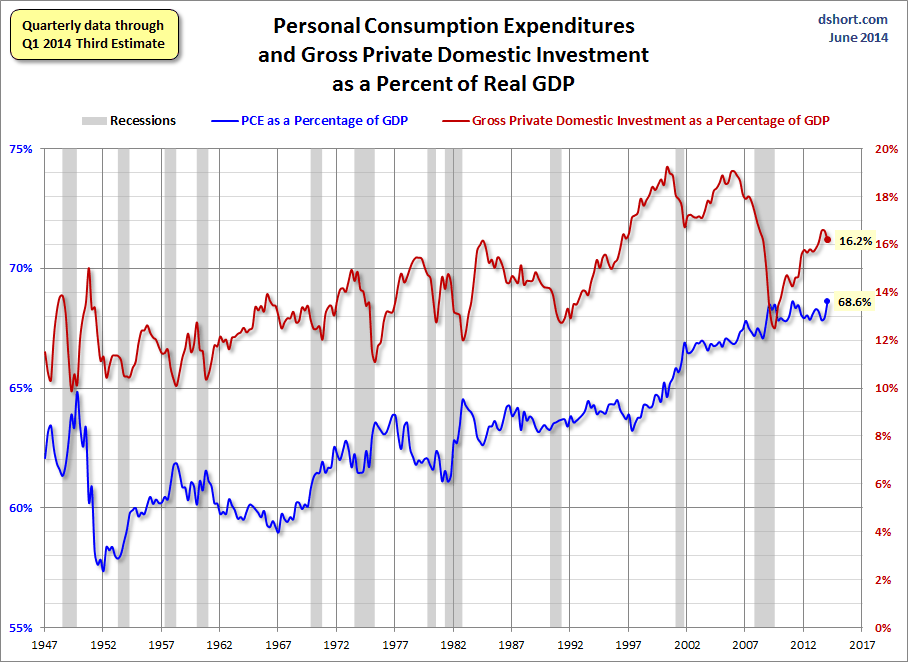Micron shares surge amid sharply higher revenue forecasts on AI-led memory demand
Note from dshort: The charts in this commentary have been updated to include the Q1 2014 Third Estimate.
The chart below is my way to visualize real GDP change since 2007. I've used a stacked column chart to segment the four major components of GDP with a dashed line overlay to show the sum of the four, which is real GDP itself. Here is the latest overview from the Bureau of Labor Statistics:
The decrease in real GDP in the first quarter primarily reflected negative contributions from private inventory investment, exports, state and local government spending, nonresidential fixed investment, and residential fixed investment that were partly offset by a positive contribution from PCE. Imports, which are a subtraction in the calculation of GDP, increased.
Let's take a closer look at the contributions of GDP of the four major subcomponents. My data source for this chart is the Excel file accompanying the BEA's latest GDP news release (see the links in the right column). Specifically, I used Table 2: Contributions to Percent Change in Real Gross Domestic Product.

Note: The conventional practice is to round GDP to one decimal place, the latest at -2.9. The -2.93 GDP in the chart above is the real GDP calculated to two decimal places based on the BEA chained 2009 dollar data series.
Over the time frame of this chart, the Personal Consumption Expenditures (PCE) component has shown the most consistent correlation with real GDP itself. When PCE has been positive, GDP has usually been positive, and vice versa. In the latest GDP data, the contribution of PCE came at 0.71 of the -2.93 real GDP. The Q1 contribution from PCE decreased rather dramatically from Q4 2013.
Of course the general view is that the unusually severe winter was a transitory cause of weak GDP rather than fundamental weakness in the business cycle. In support of that view, note that the positive contribution from PCE was highly concentrated in services with the positive contribution from consumer goods being quite tiny.
Here is a side-by-side look of the Advance, Second and Third Estimates.

Here is a look at the contribution changes between over the past four quarters. The difference between the two rightmost columns was addressed in the GDP summary quoted above. I've added arrows to highlight the quarter-over-quarter change for the major components.

As for the role of Personal Consumption Expenditures (PCE) in GDP and how it has increased over time, here is a snapshot of the PCE-to-GDP ratio since the inception of quarterly GDP in 1947. The latest ratio is 68.6%, matching the all-time high of 68.6% in Q1 2011. From a theoretical perspective, there is a point at which personal consumption as a percent of GDP can't really go any higher. We may be hovering in that upper range.

Let's close with a look at the inverse behavior of PCE and Gross Private Domestic Investment (GPDI) during recessions. PCE generally increases as a percent of GDP whereas GPDI declines. That is not what we've been seeing in recent quarters, but Q1 GDP could be sounding a caution. Note that I've plotted the two with different vertical axes (PCE on left, GPDI on the right) to highlight the frequent inverse correlation.

The Advance Estimate for Q2 GDP will published on July 25 along with annual revisions.
